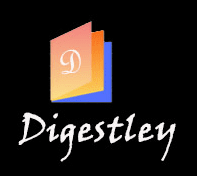Do you own a business that has been running for years now? Now that you have your hands on its workings, you should have earned experience in allotting your capital to expenditures like raw goods and equipment. This, in turn, will assist you in making a profit. It is a continuous cycle of sowing capital and reaping it back.
In the process, you have also mastered earning more. You pocket a part of this margin for growth purposes, while the other you use to continue operating your store. Knowing the drill, you probably still are on the fence on whether now is the right time to take things to the next level and branch out or expand your production.
The hesitance could originate from the thought that, even if financial papers purport your business’s current good health, you can never be too sure of how your market will behave shortly. Uncertainty is part of the game, but if you want to change it, you have to jump the gun at some point but know when the best time is. Here are just some proven indicators that you are well on your way to building the next block of your empire:
Reliable Managers
Do you have people who joined you in learning how to maneuver the knots and bolts of your business from day one? Did they witness the monumental events of your business? Were they actively involved in weighing alternative routes to your business’s major decisions?
Suppose you manage to keep these people in your ship to this day. In that case, their familiarity with the challenges your business face and company culture will be advantages if you decide to scale your business. These are people you know are well aware of your company’s long-term vision and can best translate this into fresh ideas on approaching your target market.
Managing a small business is tough in itself, more so if you decide to grow it. You need people who can handle from afar but still have their corporate values aligned with yours.
For instance, if you assign one of them to your plant, they should run it while upholding standards like personnel and equipment efficiency, output quality, and cost minimization that the business has always strived to maintain. Otherwise, you are only setting your brand identity up for diminishment, losing that quality differentiating you from your competitors.
Loyal Customer Base
Has your business gone past the maturity stage of the so-called product or service life cycle, meaning production has become into muscle memory for all branches of your operation and that you’ve figured out how to minimize costs while guaranteeing constant inflow of profit? That means all you have to do is keep the momentum and one no-fail method by preserving your customer base.
You need to set target figures for repeat purchase rate, organic sales, unique customers, and a time frame you aim to maintain. Such numbers can determine your readiness to play with the idea of setting up shop somewhere away from your home base. The aforementioned key performance indicators should also be sensitive to the rise in sales brought about by promotional campaigns and sales so you can distinguish buying behavior that is not driven by these short-term marketing programs.
Managing to stay within your targeted range should signal that you are prepared to execute the playbook again. But exercise caution as you approach new territory and put big stakes onto this new venture with little certainty of how the new market will respond. Having a fallback plan in case of poor results will help you put out fires before they threaten the security of your home base.
Secure Capital
Starting your small business, you did not purchase valuable assets like equipment only to keep it idle but to process goods to recover this big-ticket investment and earn you profit. Only if you retrieved the amount you spent on these fixed assets and paid off the amount you borrowed from an SBA lending service and other debt can you secure working capital for you to continue operating.
Maintaining the current scale of your business is constantly a trade-off between paying debt and sustaining your operations. But, if you aim to expand it, the goal is to increase cash flow that you can deliberately expend for purposes outside your current functions, including taking up additional investment opportunities.
Racking up on free cash flow becomes easier once you can earn more than enough. Doing so can cover the upfront costs of opening your business and paying dues like tax and implied expenses like equipment depreciation.
It is essential for any business aspiring to expand to maintain fixed assets like equipment to avoid incurring costs. So its functionality can be stretched even beyond its economic life or when the plant has set its production threshold higher congruent with heightened demand. This cost minimization initiative is just one way to proceed with an expansion plan with less risk of loss.
Risk is inevitable when choosing to expand one’s business. An aspect that an owner can manage, though, is their costs to operate. The more they save from efficiently operating, the better their chances of successfully expanding their business.Meta title: Indicators of a Business that Is Ready to Expand
meta desc: Has your business been doing well lately, but do you feel like it still has untapped potential? Here are signs you should take your venture up a notch.
